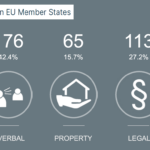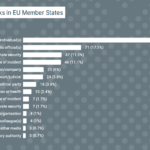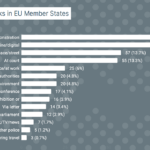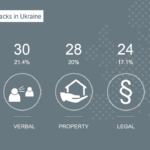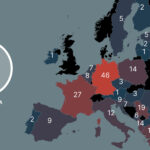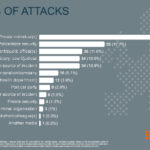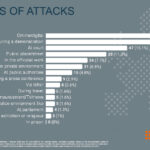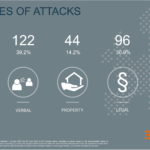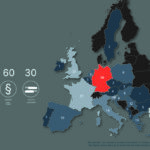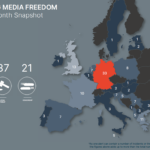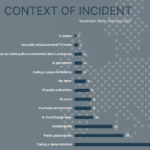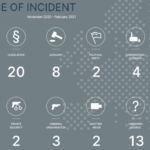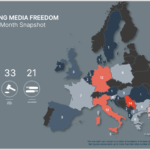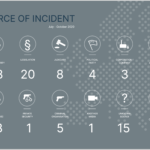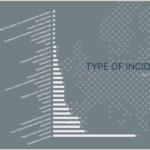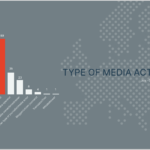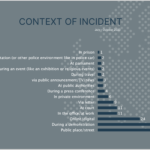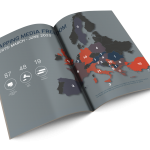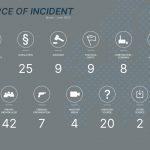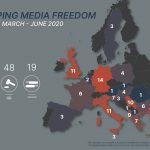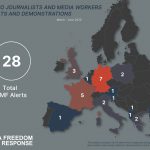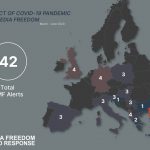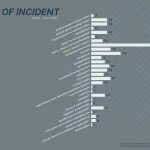Monitor
The Media Freedom Rapid Response (MFRR) is a Europe-wide mechanism that tracks, monitors and reacts to press and media freedom violations in EU member states and candidate countries.
The MFRR project, co-funded by the European Commission, provides legal support, practical support, and public advocacy to protect journalists and media workers and advance press freedom. The project partners are ARTICLE 19 Europe, the European Federation of Journalists (EFJ), Free Press Unlimited (FPU), the European Centre for Press and Media Freedom (ECPMF), the International Press Institute (IPI) and the Osservatorio Balcani e Caucaso Transeuropa (OBCT). Until April 2022, the Institute for Applied Informatics of the University of Leipzig was also a project partner.
Displayed here are all the alerts monitored in the ‘MFRR region’ since the start of the project in March 2020. Until April 2022, MFRR also covered the United Kingdom, which was discontinued pursuant to Brexit. In March 2022, the MFRR mandate was extended to include Ukraine for cases from 24 February 2022 onward. Moldova has been monitored since 23 June 2022 and Bosnia and Herzegovina since 15 December 2022.
Please be aware that numbers are not comparable due to the coverage of different countries over different periods. For comparable numbers you can instead use other filters, such as “MFRR countries continuously monitored”, EU membership status, or individual countries.
Anyone can report incidents! If you know about a media freedom violation not documented yet, please help us by submitting it using our Report It form.
Disclaimer
With the MapMF Alert Explorer you can gain insights into press freedom issues across Europe, identify country specific issues, or gain knowledge of specific topics. Please note that the raw number of alerts should not be interpreted as an indication of the severity of the press freedom situation in a country and that countries should not be compared by the raw number of alerts alone. Learn more about data interpretation here.
Monitoring Report January-June 2025
This Monitoring Report takes stock of the press freedom situation in 36 EU Member States and candidate countries during the first six months of 2025. Between January and June, the Mapping Media Freedom database documented 709 press freedom violations, affecting 1249 media workers or entities. The report was produced by the European Centre for Press and Media Freedom (ECPMF), the European Federation of Journalists (EFJ), and the International Press Institute (IPI).
The report documents a vast variety of attacks, indicating that media workers in Europe operate in an increasingly hostile environment. The types of attacks documented included verbal attacks – such as death threats and smear campaigns – physical attacks, attacks to property, legal incidents, and interference with reporting work.
Media workers faced threats in different contexts – including private and professional environments. Attacks online were the most common, a trend that continues from previous reports. The second most dangerous workplace for journalists were protests, followed by incidents at court and public places.
Mapping Media Freedom Monitoring Report – January-December 2024
The partners from the Media Freedom Rapid Response (MFRR) documented and analysed all media freedom violations recorded on the Mapping Media Freedom database in the European Union Member States and candidate countries from January to December 2024. The report was produced by the European Centre for Press and Media Freedom (ECPMF), the European Federation of Journalists (EFJ), and the International Press Institute (IPI).
The latest annual Monitoring Report analyses the press freedom situation in 35 European countries, including the 27 EU Member States and nine countries with EU candidate status. Between January and December 2024, Mapping Media Freedom documented 1,548 press freedom violations targeting 2,567 media-related persons or entities.
Mapping Media Freedom Monitoring Report – January-June 2024
The partners from the Media Freedom Rapid Response (MFRR) documented and analysed all press freedom violations recorded on the Mapping Media Freedom database in European Union Member States and candidate countries from January to June 2024. The report was produced by the European Centre for Press and Media Freedom (ECPMF), the European Federation of Journalists (EFJ), and the International Press Institute (IPI).
The latest Monitoring Report explores in detail the 756 media freedom violations recorded by the MFRR partners in the first half of 2024. These violations affected 1,212 media-related persons or entities. 474 of these alerts were recorded in EU Member States while 282 took place in candidate countries.
As well as providing a general overview of media freedom violations across EU Member States and candidate countries, the report includes three thematic chapters delving into anti-media laws, spoofing, and elections. The report also includes a deep dive into the state of media freedom – as told through Mapping Media Freedom data – in the following countries: Albania, Croatia, France, Georgia, Germany, Hungary, Italy, Serbia, Slovakia, and Ukraine.
Mapping Media Freedom Monitoring Report 2023
Throughout 2023, the Media Freedom Rapid Response (MFRR) recorded 1,117 media freedom violations in EU Member States and candidate countries, involving 1,620 individuals or media outlets. 602 alerts were recorded in the EU, while 515 were registered in candidate countries.
In the EU, the main source of attacks remained private individuals (almost 33% of cases), worryingly followed by public officials (17.9%) and police and state security (12.6%). Three media workers were murdered – two in Ukraine and one in Albania. 149 media freedom violations were recorded in Ukraine, a slight increase on last year’s 147 alerts. The MFRR started monitoring Ukraine immediately after the full-scale invasion in 2022. 20.6% of all incidents in the EU involved some kind of physical attack. A considerable number of incidents included cases involving attacks to property (17.4%) and censorship (15.9%). Within Member States of the EU, verbal attacks (35.9%) represented the largest amount of alerts, followed by legal incidents (24.9%) and physical attacks, accounting for 20.6% of the total incidents. In EU candidate countries, legal incidents were at the forefront of alerts (29.7%), followed by verbal attacks such as harassment second with 27.2%.
The report also includes country reports offering a summary of the most relevant threats in the following EU countries: France, the Netherlands, Italy, Hungary, Spain, Finland, and Slovakia; and in the following candidate countries: Serbia, Albania, Bosnia and Herzegovina, and Turkey.
Mapping Media Freedom Monitoring Report – January-June 2023
From January to June 2023, the MFRR partners recorded 575 media freedom violations in European Union Member States and candidate countries, involving 844 individuals or media outlets. 307 of those took place in EU Member States, while 268 occurred in candidate countries.
In the EU the most common type of attacks were verbal attacks (35.8%) such as insults and discrediting of journalists, to which this report dedicates one of its thematic chapters. Legal attacks were the second most prominent category (24.8%), followed by physical attacks (21.2%), attacks on property (16.9%), and censorship (14.3%).
The current monitoring report offers an overview of the media freedom situation across the EU and candidate countries in the first half of 2023 and it starts with a thematic chapter on the crackdown on independent media in Turkey amidst devastating earthquakes and national elections that took place at the beginning of the year, followed by a chapter on the war in Ukraine and its repercussions on media freedom.
The report also covers the rise in attacks on journalists and media workers by police officers and security forces and, as mentioned earlier, the rise in the discrediting of journalists and reputational attacks against them to hinder their work.
The report is divided into the following chapters: an overview offering data and graphics about the press freedom situation in the EU and in candidate countries in 2023, four thematic sections with quantitative and qualitative analysis regarding the aforementioned topics, and country reports offering a summary of the most relevant threats in the following EU countries: Italy, Poland, Hungary, Bulgaria, Greece, Germany, and France; and in the following candidate countries: Bosnia and Herzegovina and Serbia.
Mapping Media Freedom Monitoring Report 2022
In 2022, the Media Freedom Rapid Response (MFRR) recorded 813 media freedom violations in EU Member States and candidate countries involving 1,339 individuals or media outlets. 415 alerts were recorded in the EU, while 398 were registered in candidate countries. 10 journalists were murdered: nine in Ukraine and one in Turkey.
The current monitoring report offers an overview of the media freedom situation across the EU and candidate countries in 2022, and it starts with a thematic chapter on the war in Ukraine and its repercussions on media freedom. The MFRR started monitoring the country immediately after the full-scale Russian invasion started in late February, and it recorded 140 media freedom violations.
In the EU, the main type of incidents were verbal attacks (42.4% of all alerts), followed by legal attacks (27.2%), to which this report dedicates an extensive chapter on the year that the European Commission put forward a proposal for an EU anti-SLAPP directive.
The report also includes a third thematic section on online attacks. While in 2021 protests were the most frequent place for journalists to be attacked (39.8%), 2022 data shows that protests only accounted for 21% of the alerts in the EU, while attacks taking place online rose from 14.1% in 2021 to 20.7% in 2022.
A final thematic chapter focuses on the threats faced by journalists covering climate and environmental topics (12 alerts in the EU in 2022). In the past year, as these protests became more disruptive, journalists covering these actions were subjected to obstruction of their work.
The report is divided into the following chapters: an overview offering data and graphics about the press freedom situation in the EU and candidate countries in 2022, four thematic sections with quantitative and qualitative analysis regarding the aforementioned topics, and country reports offering a summary of the most relevant threats in the following EU countries: Belgium, Estonia, France, Germany, Greece, Hungary, Italy, Poland, Spain, and Sweden; and in the following candidate countries: Albania, North Macedonia, Serbia, and Turkey.
Mapping Media Freedom Monitoring Report – January-June 2022
The latest edition of the MFRR Monitoring Report outlines the state of media freedom throughout all European Union Member States and candidate countries from January to June 2022.
The report includes a visual analysis of the data compiled for Mapping Media Freedom, which collects and visualises all press freedom violations in the European Union Member States and candidate countries. Although Moldova and Ukraine received candidate country status on 23 June, alerts from these countries are not included in the 6 month analysis. However, given the severe impact Russia’s invasion has had on journalist safety and media freedom, the report includes a dedicated chapter focusing on Ukraine.
In the first six months of the year, 311 media freedom violations were recorded in 29 countries. These involve 552 persons or entities related to media, including journalists, media companies, family members, journalists sources, and NGOs fighting for press freedom.
Verbal attacks, including harassment and threats were the most common types of violations, making up 39.2% of the total number of attacks. This was followed by legal incidents (30.9%) and physical attacks (19.3%). Attacks to property made up 14.2% of alerts and 12.9% of alerts were linked to censorship, such as blocked access to information.
Among these attacks was the murder of Güngör Arslan, Managing Editor of the Turkish newspaper Ses Kocaeli.
As for perpetrators, private individuals remained the main source of attacks to journalists and media workers (36.3%), followed by police and state security (17.7%) and government and public officials (11.6%).
In terms of contexts in which violations took places, online and digital attacks increased significantly and became the most frequent context (22.8%) closely followed by attacks during protests (22.2%), violations in courts (15.1%), and in public places or on the street (11.3%).
After providing a general overview of the alerts, the report continues with thematic analyses focusing on the war in Ukraine, compliance with some topics raise in the Recommendation on the protection, safety, and empowerment of journalists, and the surveillance of journalists and media workers. These analyses are followed by country reports summarising the state of media freedom in Turkey, Greece, Spain, Poland, Malta, France, Germany, Serbia, Belgium, and the Netherlands.
Mapping Media Freedom
Central to our monitoring work is the Mapping Media Freedom Platform that captures, represents, and visualises press and media freedom violations.
This involves threats and attacks to journalists, media workers, and media companies, reported by partners, watchdogs, and members of the public, as well as identified by our internal monitoring tool, the News and Tweets Observer, which automatically detects press and media freedom violations reported in news articles and tweets using Artificial Intelligence. Before being published, each incident is verified and classified by our monitoring experts.
This platform offers an unprecedented picture into the threats to press and media freedom in all EU member states and candidate countries. By publishing the results of our monitoring we are also establishing a foundation for further public advocacy work, exposing violations, and demonstrating the need for political, physical, and legal protections for press and media freedom.
We invite everyone to report violations they witness through our user-friendly anonymous ReportIt form. Your involvement will strengthen our work to protect journalists and media workers in EU member states, candidate countries, and Ukraine.
Displayed here are all the alerts monitored in the ‘MFRR region’ since the start of the project in March 2020. Until April 2022, MFRR also covered the United Kingdom, which was discontinued following Brexit. In March 2022, the MFRR mandate was extended to include Ukraine for cases from 24 February 2022 onward.
Please be aware that numbers are not comparable due to the coverage of different countries over different periods. For comparable numbers, other filters can be used such as “MFRR countries continuously monitored”, EU membership status, or individual countries.
Mapping Media Freedom Monitoring Report 2021
Partners of the Media Freedom Rapid Response (MFRR) have published the latest MFRR Monitoring Report, outlining the state of media freedom throughout all EU member states, candidate countries, and the United Kingdom in 2021.
The report includes a visual analysis of the data compiled for Mapping Media Freedom, which collects and visualises all press freedom violations recorded by the MFRR monitoring partners. Before delving into country-specific analyses, the report highlights media freedom violations linked to COVID-19 and online/digital attacks, two categories that feature prominently throughout the 2021 report. The report closes with a list of positive developments for media freedom in the previous year.
An overview of the report’s key findings can be found below.
From January to December 2021, 626 alerts were documented on Mapping Media Freedom (MapMF), ranging from verbal attacks to legal incidents. These alerts affected 1,063 individuals or media entities in 30 countries. The violations include the murders of three journalists: investigative journalist Peter R. de Vries in the Netherlands, veteran crime reporter Giorgos Karaivaz in Greece, and local radio presenter Hazım Özsu in Turkey.
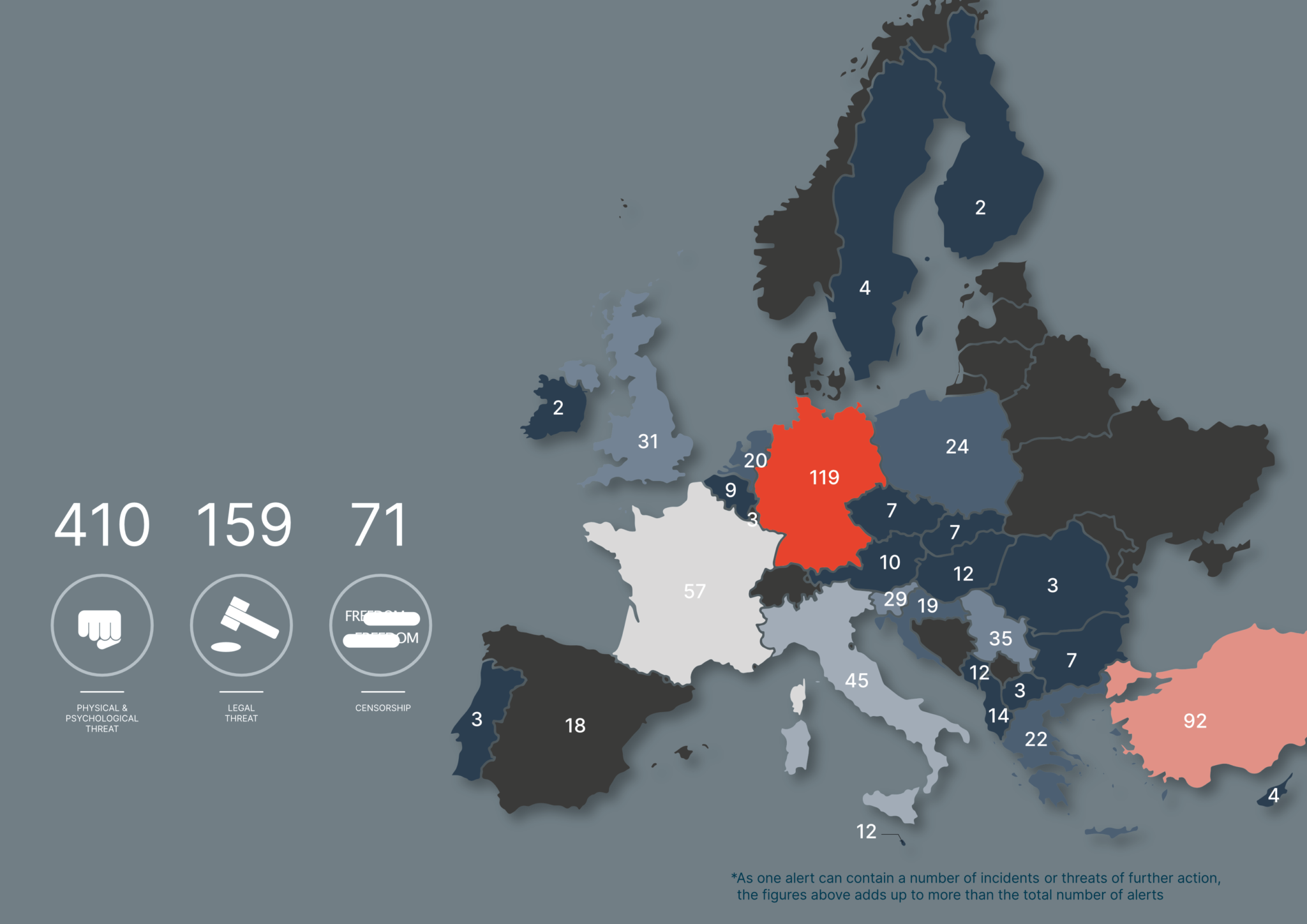
The most commonly recorded type of violation was verbal attacks (41.1%), which includes intimidation, harassment, and insults. This is followed by legal incidents (25.4%), physical attacks (21.1%), and censorship (11.3%) such as arbitrary denial of accreditation or registration.
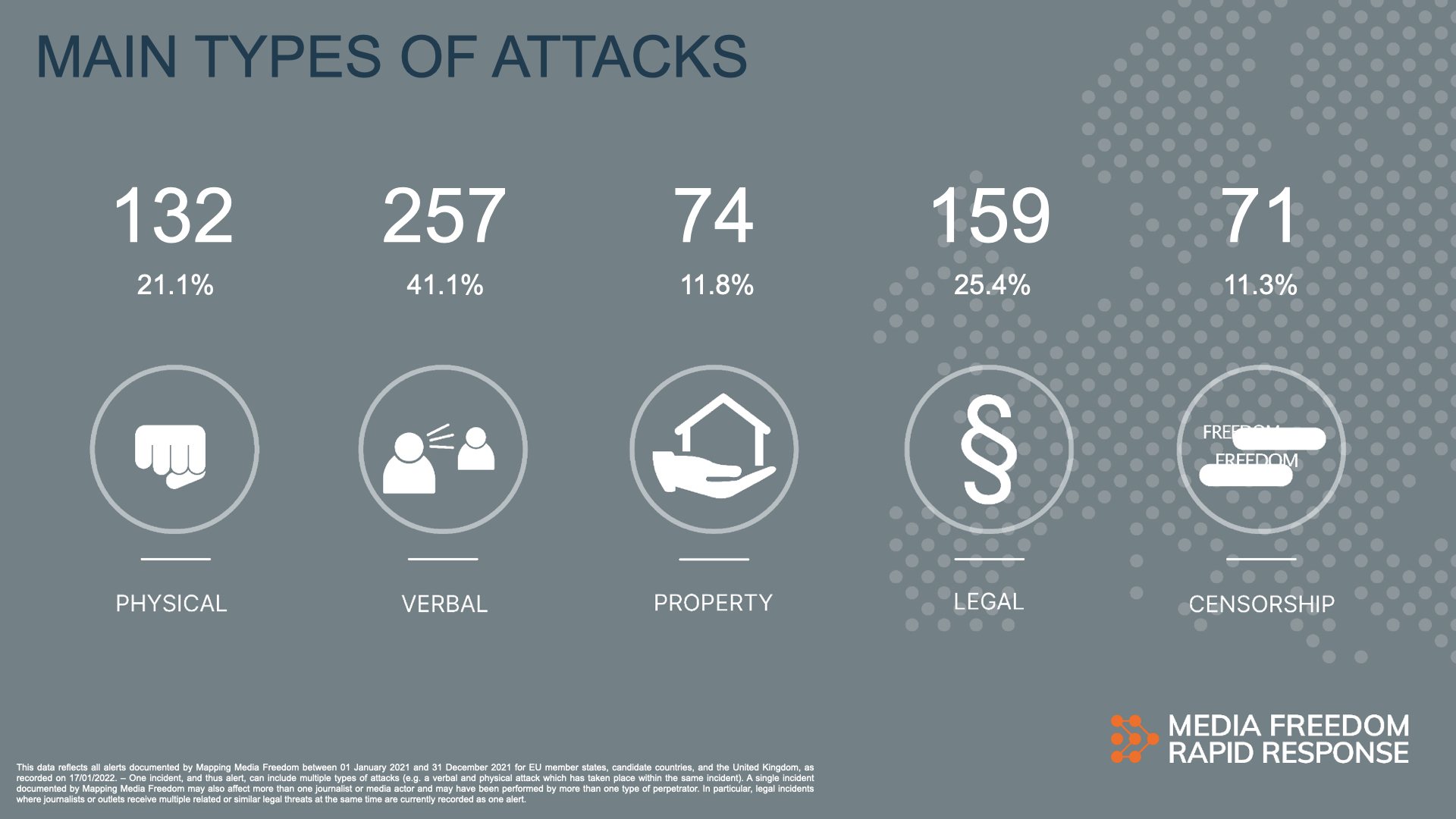
The 2021 Monitoring Report — much like 2020 — was marked by the impacts of the COVID-19 pandemic and the associated restrictions. In fact, more than one quarter (26.5%, 166 violations) of all alerts logged on MapMF in 2021 were linked to the pandemic. These involved attacks on 252 different persons or entities in 19 countries. Many of these alerts involved physical and online attacks on journalists reporting on anti-vaccine and anti-lockdown protests.
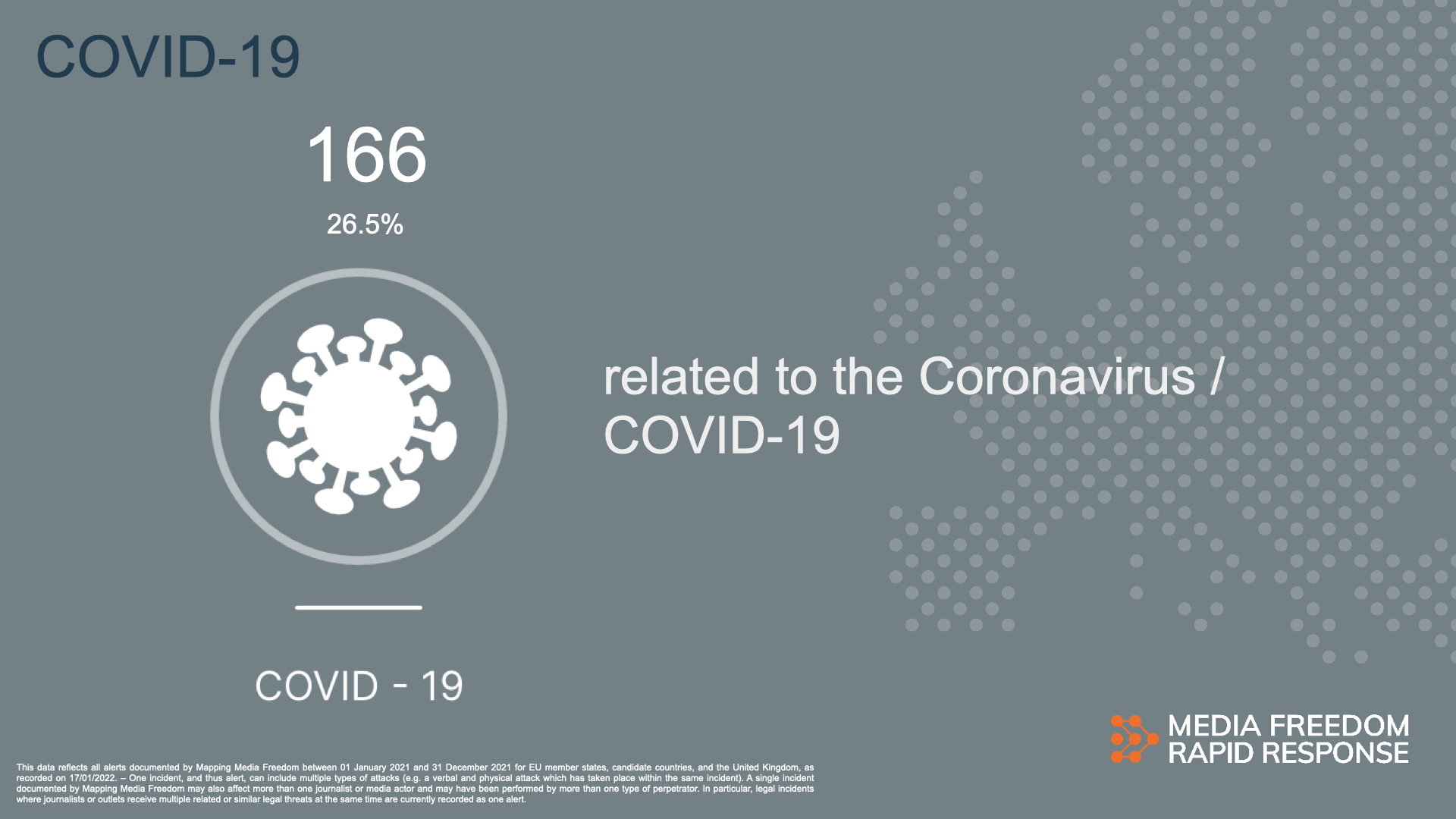
In terms of where the attacks took place, most media freedom violations took place at demonstrations, where 178 alerts were recorded — 28.4% of the total. Following this, alerts were also recorded online or in digital spheres (16.8%), in public places or on the street (13.1%), at court (11.2%), at work (7.2%), during an event (4.3%), at press conferences (2.9%), and at police stations (2.9%). A breakdown of other contexts for violations can be found below.
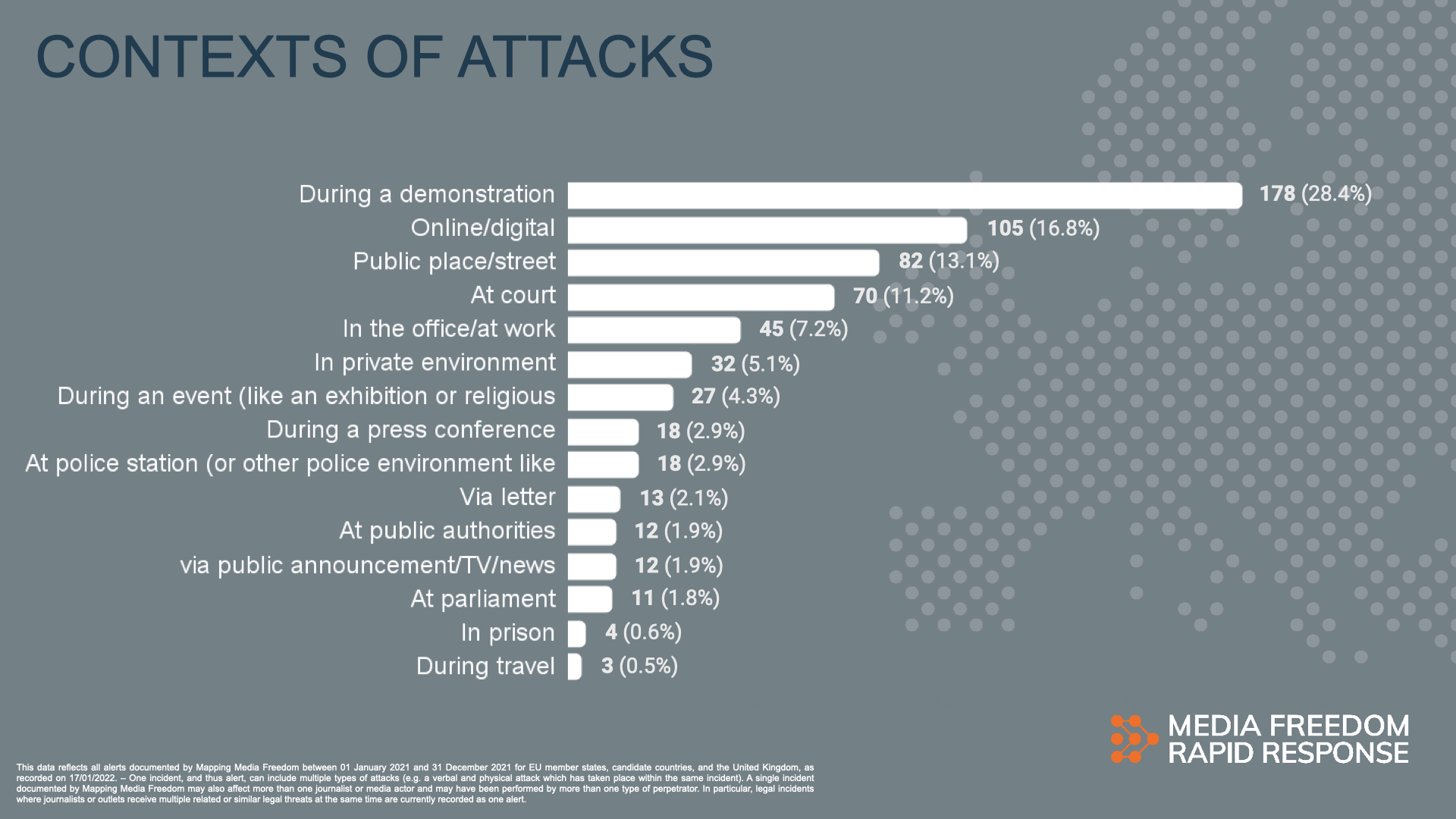
As was the case in previous reports, private individuals remain the main perpetrators of attacks, with 41.2% of all violations. This is followed by police or state security (18.5%), legislation i.e. government/public officials (12.3%), unknown sources (10.7%), and the judiciary i.e. from a court (7.2%). A full break down of all other sources of violations can be found in the infographic below.
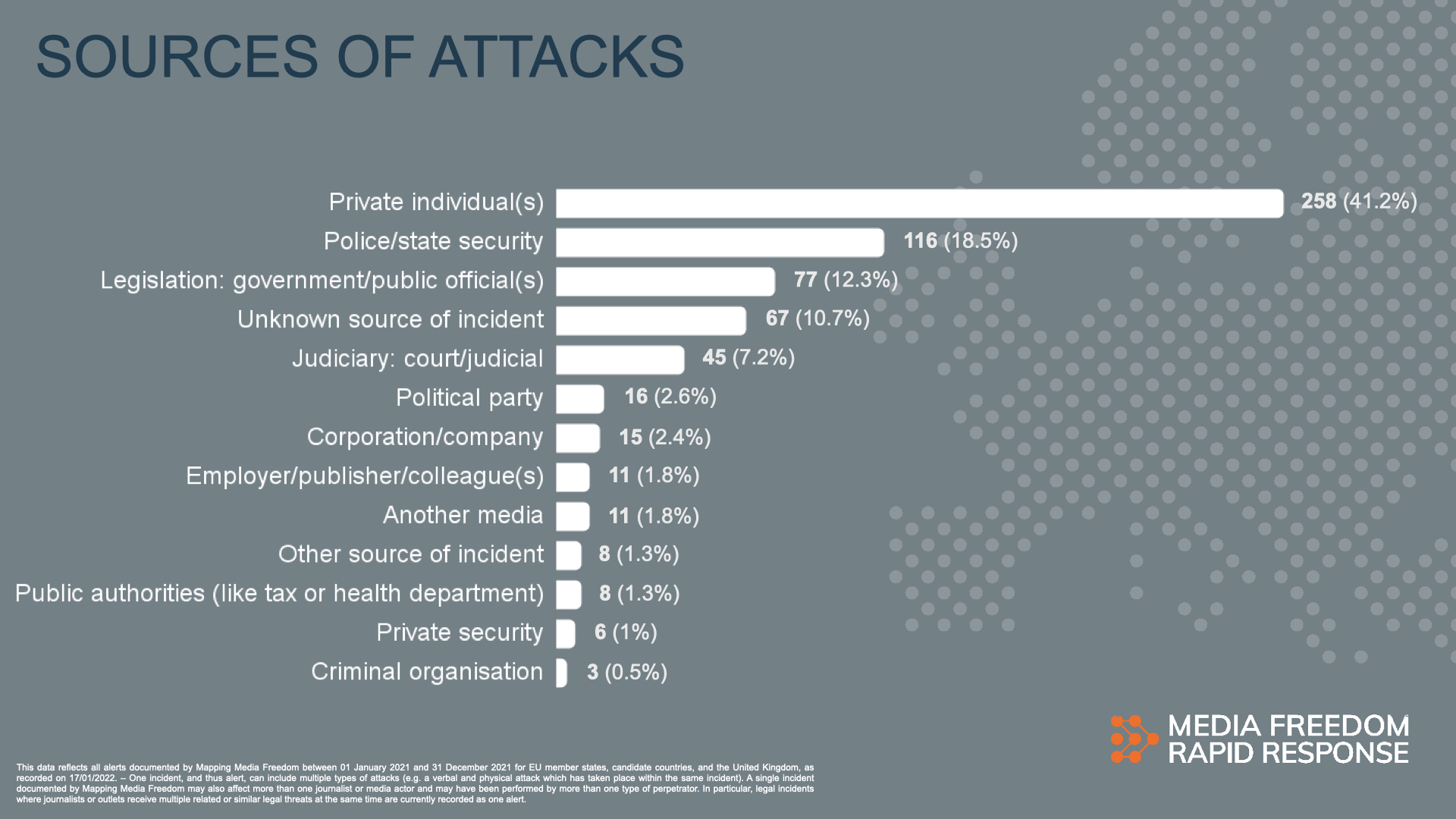
The report continues to outline the media freedom situation in Germany, Turkey, France, Italy, Serbia, Slovenia, Poland, Greece, the Netherlands, Spain, Albania, Montenegro, and Hungary.
Once again, the MapMF Monitoring Report has highlighted that the media is a target for many actors, ranging from governments trying to obstruct free press to individuals who are unhappy with the current social, health, and economic situation. Despite this, the past year has shown as clearly as ever how vital the work of independent media is. During crises and turmoil, as evidenced by the ongoing COVID-19 pandemic, it is essential that journalists can work freely and safely to ensure they can offer information to the public when it is most needed.
FACT SHEET MAPPING MEDIA FREEDOM
European Union Member States
The Year 2021
This fact sheet is a selection of statistics and analysis from Mapping Media Freedom (MapF), submitted by the partner organisations in the Media Freedom Rapid Response (MFRR). This data covers the period from 1 January until 31 December 2021 in the 27 current EU Member States (i.e., it does not include the United Kingdom).
It provides an overview of the different issues faced by journalists and media actors in 2021 in European Union Member States. Each alert documented on Mapping Media Freedom is classified based on a detailed category system, including the type of attack, type of aggressor (source), and the place (context) in which the attack happened. Through analysis of these aspects, more information about the characteristics of the attacks can be revealed, which provides deeper insights into the situation of press and media freedom and its trends.
The respective alerts of this fact sheet can be viewed directly in the Alert Explorer here. This fact sheet includes the analysis of all incidents of the year 2021 published until 15 January 2022. If cases are reported and published after this date, they will still appear in the data linked in the Alert Explorer above to give an up-to-date view at any time.
Beside the overview, this document also provides more detailed information on the following selected topics: COVID-19, protests, online and digital attacks, physical attacks, and attacks against women journalists..
Mapping Media Freedom: Monitoring Report – January-June 2021
January 2021 marked the start to the second year of the Covid-19 pandemic. While many countries had previously signalled that strict lockdowns and emergency legislation would no longer be necessary, most European states welcomed the new year with more coronavirus cases than ever before and with severely restrictive measures.
On a positive note, in this period the first vaccines arrived in most European countries but with them also started anti-vaccine protests which have continued throughout 2021.
It also proved that the consequences of the pandemic were now affecting many areas of society, shaping political discourses, radicalising some anti-lockdown movements, and threatening press and media freedom in most countries.
The current monitoring report for the Media Freedom Rapid Response has focused on summarising press and media freedom violations across EU Member States and Candidate Countries from January 2021 until June 2021. It must be noted that this is the first time that the monitoring report covers 6 months instead of 4. While it might create a temporary data overlap, the new update on the methodology will allow for the creation of biannual reports that better reflect general trends in half year periods.
Throughout the reporting period, 272 alerts have been documented, ranging from verbal attacks to legal incidents. 438 individuals or media entities in 26 countries have been subject to one or more press freedom violations, including the murder of veteran crime reporter Girogos Karaivaz in Greece.
26.1% of these alerts were related to Covid-19, from journalists insulted while covering anti-lockdown demonstrations to reporters receiving threats online for their coverage of vaccination programmes.
In fact, most violations of press and media freedom took place at demonstrations. Although not all of these demonstrations are linked to Covid-19, many incidents happened at anti-vaccination and anti-lockdown protests, where the press has become a target, as explained in the country analysis of Germany and the “Querdenker” movement.
The cross-country analysis also covers this topic with information from several countries. Online threats have also been on the rise in most countries, a trend that is widely explained in the thematic section of the report, which combines data on the topic from several countries and also the latest qualitative examples from Slovenia or Italy.
The most commonly recorded violation has been intimidation/threats (26.8% of the total), followed by physical assaults not resulting in injury (12.1%), Insults to media workers are the third most common threat (10.7%), followed by discrediting, physical assault resulting in injury, and attacks to equipment.
Private individuals remain the main source or perpetrators of attacks (41.2%), followed by police or state security forces (17.6%), then government/public officials (14%).
This monitoring report uses the same format as the previous ones to analyse the topics and threats that have affected press and media freedom in the covered area in Europe. The report has been compiled by the International Press Institute (IPI) and the European Federation of Journalists (EFJ), with support from the European Centre for Press and Media Freedom (ECPMF), in the context of the joint Media Freedom Rapid Response project which monitors and supports journalists, media workers, and platforms that have been threatened.
The report includes a visual analysis of the data compiled for Mapping Media Freedom, which collects and visualises all press freedom violations in the European Union and Candidate Countries. The quantitative analysis is followed by country reports, where MFRR partners highlight some of the most relevant cases of the first 6 months of 2021 in the most affected countries. After this, a cross-regional thematic comparative analysis focuses on the rise of online threats, which have been one of the main contexts of alerts during the studied period and will continue to be monitored in the coming periods. A second comparative analysis focuses on physical attacks against journalists. A brief conclusion closes the report.
The Media Freedom Rapid Response was launched in March 2020 to support at-risk journalists and media workers across EU Member States and Candidate Countries. Past reports can be freely accessed and downloaded on the MFRR website.
Mapping Media Freedom: A Four-Month Snapshot (November 2020 – February 2021)
EFJ and IPI, supported by ECPMF, have compiled the third monitoring report analysing the 4-month period between November 2020 and February 2021, charting the continuation of a worrying decline in media freedom in EU Member States and Candidate Countries.
The monitoring report compiled by the European Federation of Journalists (EFJ) and International Press Institute (IPI), with support from ECPMF, gives unprecedented insight into the threats to media freedom in EU member states and Candidate Countries. Within the monitored period, a total of 147 alerts were registered on the Mapping Media Freedom platform charting a wide range of threats across the continent.
A dominant trend is clear: there is no one source or type of threat that we need to protect against. This is a landscape replete with competing motivations, political contexts, methods and tools deployed to target media freedom that undermines the efficacy of a silver bullet approach to protecting journalists. Instead, the analysis shows the need for long term, in-depth and nuanced responses from national, regional and supranational bodies, alongside increased public solidarity and support.
Mapping Media Freedom: A Four-Month Snapshot (July – October 2020)
EFJ and IPI, supported by ECPMF, have compiled the second monitoring report analysing the 4-month period between July and October 2020, charting the continuation of a worrying decline in media freedom in EU Member States and Candidate Countries.
The monitoring report compiled by European Federation of Journalists (EFJ) and International Press Institute (IPI), with support from ECPMF, gives unprecedented insight into the threats to media freedom in EU member states and Candidate Countries. Within the monitored period, a total of 114 alerts were registered on the Mapping Media Freedom platform charting a wide range of threats across the continent.
Key trends including the continued impact of COVID-19 pandemic (and governments’ responses to this crisis), the use of Strategic Lawsuits Against Public Participation (SLAPPs) and other vexatious lawsuits aiming at intimidating journalists into silence, as well as the normalisation of online and offline harassment, threats and smear campaigns aimed at delegitimising, targeting and intimidating journalists and media workers:
Mapping Media Freedom: A Four-Month Snapshot (March – June 2020)
EFJ and IPI, supported by ECPMF, have compiled a report analysing the first 4-months of the MFRR, charting a worrying decline in media freedom in EU Member States and Candidate Countries.
The monitoring report compiled by European Federation of Journalists (EFJ) and International Press Institute (IPI), with support from ECPMF, gives unprecedented insight into the threats to media freedom in EU member states and Candidate Countries. Within the monitored period from March to June a total of 120 alerts were registered on the Mapping Media Freedom platform from two-thirds of the countries covered by the MFRR.
Key trends including the COVID-19 Pandemic (and governments’ responses to this crisis) and the dangers from demonstrators and police officers for journalists and media workers covering protesters and demonstrations.
Mapping Media Freedom 2.0
In partnership with Institute for Applied Informatics at the University of Leipzig (InfAI), the MFRR has developed its unique monitoring database Mapping Media Freedom 2.0, which analyses and collates alerts about press and media freedom violations from online published news and social media. Once the information has been verified by a network of experts, these alerts expand the reach and efficacy of the MFRR’s monitoring process to enable it to respond more effectively across the continent.
Legal monitoring
Journalists and press workers are threatened with costly, time-intensive and damaging legal actions across the continent. The MFRR and our partners monitor court actions to ensure due process and international legal norms are followed, demonstrate solidarity with the defendants, their colleagues and families and establish a basis for future advocacy, legal and practical support.
Council of Europe Platform
MFRR partners post a number of alerts to the Council of Europe Platform to promote the protection of journalism and safety of journalists.
